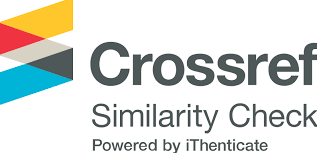Research on propagation Q15.38, Q15.013, Q16.427 clones of Melaleuca quinquenervia by technique in vitro
Keywords:
Clones, essential oil, in vitro, Melaleuca quinquenerviaAbstract
Q15.38, Q15.013, Q16.427 clones of Melaleuca quinquenervia (Cav.) S.T.
Blake have high content and quality of essential oils, recognized as
technically advanced varieties by the Ministry of Agriculture and Rural
Development. Therefore, identification and optimization of the in vitro
propagation method for the above clones by in vitro culture method are
necessary and have practical significance in increasing the biodiversity and
safety in the industrial afforestation, as well as to quickly put good varieties
into production and provide large quantities of stable see dlings to forest
growers. The results of in vitro propagation of these Melaleuca clone lines
showed that cleaned samples by disinfecting with Javen 5% for 10 minutes
are shooting with 44.44 - 64.4%. The medium to create shoot cluster is
MS* + 0. 7 mg/l BAP + 0.2 mg/l Kinetin +0.1 mg/l NAA, with 100% of created shoot cluster and 3.5 - 3.6 shoots per cluster. Stimulating shoot
growth on medium of 0.3 - 0.4 mg/l Kinetin + 0.7 mg/l BAP + 0.1 mg/l
NAA is resulted with effective shoot rate of over 84.44%, coefficient shoot
multiplication of over 3.7 times, shoot height of over 2.73 cm after 3 weeks
of tissue culture. The shoot pots in the rapid multiplication period placed
under 1,000 lux light intensity for 1 culture cycle are most suitable. The
rooting medium of these Melaleuca clone lines is MS* + 1.5 mg/l NAA
(100% rooting shoots, 2.4 - 3.8 roots/shoot, 1.7 - 2.2 cm root length after 3
culture weeks). The substrate of 30% hunk rice husk and 70% of soil from
layer B is suitable for the crowning of these Melaleuca clones, with a
survival rate of over 95%, the tree height of 21.67 - 25.49 cm, the plants
with good quality after 3 months of planting in the nursery.
References
1. Trịnh Thị Điệp, Trần Thanh Hà, Lê Đình Khả, 2012. Tác dụng sinh học của các loại tinh dầu tràm giàu terpinene-4 - ol và 1,8 - cineole (tổng quan). Tạp chí Dược liệu, số 4 - 2012, tập 17, trang 203 - 211.
2. Lê Đình Khả, Nguyễn Thị Thanh Hường, Mai trung Kiên, K. Pinyopusarerk, 2008. Biến dị sinh trưởng, hàm lượng và chất lượng tinh dầu một số loài tràm hiện có ở Việt Nam. Tạp chí K hoa học và công nghệ Bộ Nông nghiệp và Phát triển nông thôn, số 11, trang 68 - 76.
3. Phùng Thị Hằng, Nguyễn Bảo Toàn, 2011. Nhân giống cây Tràm (Melaleuca cajuputi) bằng phương pháp nuôi ấy mô. Tạp chí Khoa học Trường Đại học Cần Thơ, số 20b, tr. 89 - 96.
4. Khuất Thị Hải Ninh, 2015. Nghiên cứu nhân giống một số dòng vô tính Tràm năm gân (Melaleuca quiquenervia) bằng nuôi cấy mô. Tạp chí Nông nghiệp và PTNT, chuyên đề giống cây trồng, vật nuôi tập 1, tháng 6.2015, tr. 220 - 226.
5. Nguyễn Hải Tuất, Nguyễn Trọng Bình, 2005. Khai thác và sử dụng SPSS để xử lý số liệu trong lâm nghiệp, NXB Nông nghiệp.
6. Khan Ikhlas A., Ehab A. Abourashed, 2010. Leung’s Encyclopedia of Common Natural Integridients. Used in Food, Drugs, and Cosmetics. Third edition by John Wiley and Sons, Inc..publication, Hoboken, NewJersey. Printed in the United States of America, 833 pp. (124 - 126 pp).
7. Yohana de Oliveira, Fernanda Pinto, André Luís Lopes da Silva, Ivan Guedes, Luiz Antonio Biasi, Marguerite Quoirin, 2010. An efficient protocol for micropropagation of Melaleuca alternifolia Cheel, In Vitro Cell.Dev. Biol.- Plant, No46, pp.192 -197








